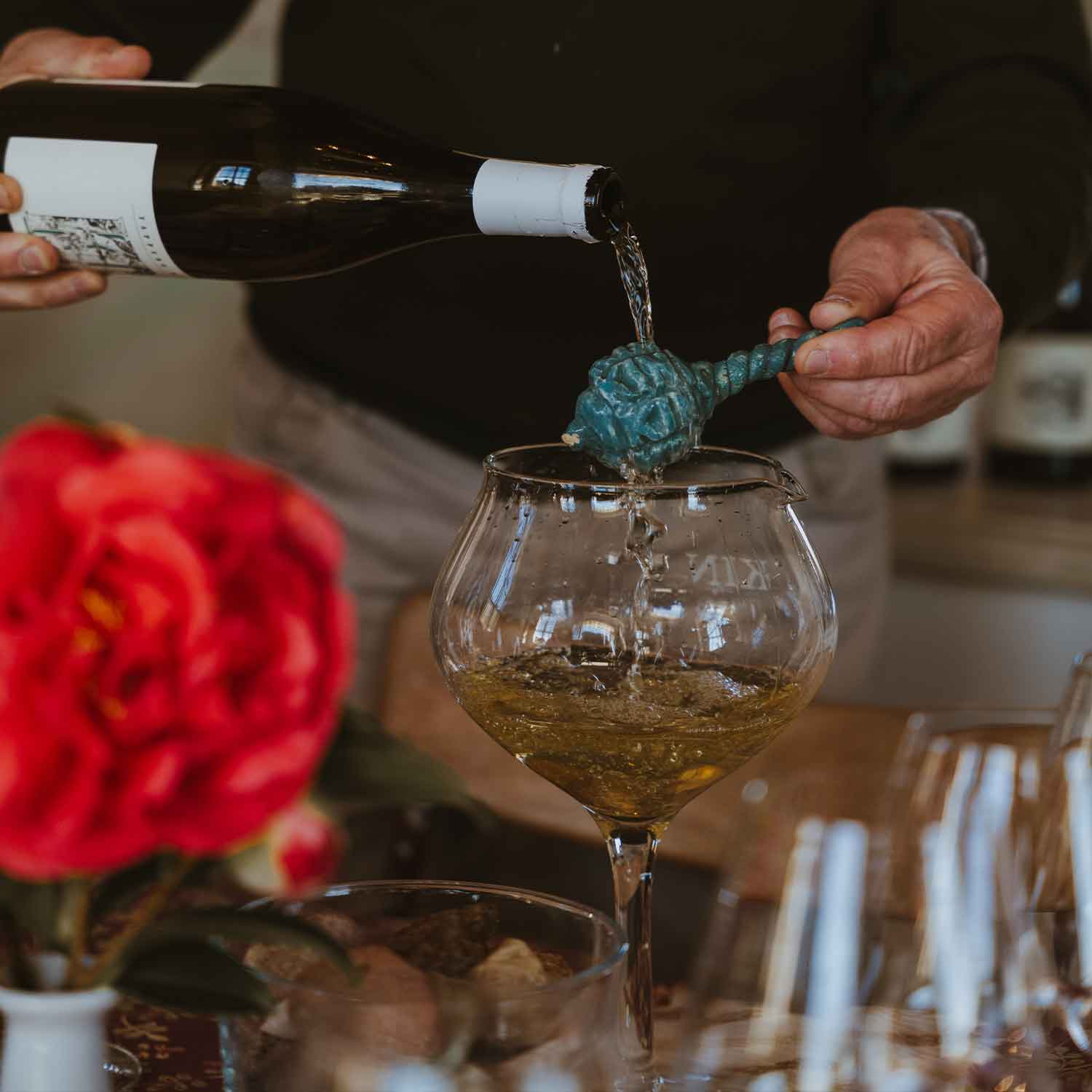

historical notes
Encapsulated in this Piedmontese white wine is the story of a territory, its people, its traditions, an ancient grape variety and that of an old vine grower who loved hunting: KIN. Kin was my grandfather. A simple man of high ideals, his life marked by the times of vineyard and cellar, because nothing was more important than his wine. He was an artist. The vineyard was his canvas, the Erbaluce his brush, the sun, the rain, the soil his colors. Every year he presented us with a new work: his latest wine. I inherited from him the passion for the vineyard, the attention to detail, the patient observations, trying to best interpret his philosophy that was expressed in simple gestures of ancient wisdom and a deep respect for nature.


In the cellar
The first fermentation of the Erbaluce wine is started in steel on yeasts at controlled temperature and ends in 20 hl oak barrels where KIN matures for another 18/36 months. Aging takes place on the lees with weekly battonage. Racking into cement vats with a stay of several months to promote decanting. Clarification and filtration with maximum respect for the integrity of the wine. This is followed by further bottle aging of 1 to 2 years.

Tasting
Erbaluce di Caluso DOCG KIN is an intense straw yellow, with great vivacity and consistency. On the nose an enveloping and elegant note of sage blends with intriguing balsamic and spicy scents that make the olfactory profile even more complex, with a clear mineral matrix, alternating in succession citrus, floral and wild herb nuances. In the mouth, freshness and savoriness alternate harmoniously until they merge into a soft and warm finish with citrus references. Erbaluce KIN wine should be served at a temperature of 14/16° C, taking care to open the bottle at least an hour before consumption or to oxygenate it in a decanter with an oxygenation ball, in order to better appreciate its characteristics.
Pairings
KIN pairs well with important appetizers and especially with elaborate and structured first and second courses. Among first courses, risottos and pastas with fish and seafood, crespelle and agnolotti di magro excel. An unusual and excellent pairing is with battuta di fassona, which is ideal in accompanying fried seafood and the traditional fritto misto alla piemontese. Second courses of fish stew, baked and excels in pairings with pan-fried and baked white meats (chicken, turkey, duck, guinea fowl, etc.) it is exalted with rabbit Ligurian style and with stews in vegetable broth. At temperatures of 18 to 20 degrees it may well accompany dry pastries and lightly sweetened desserts.

